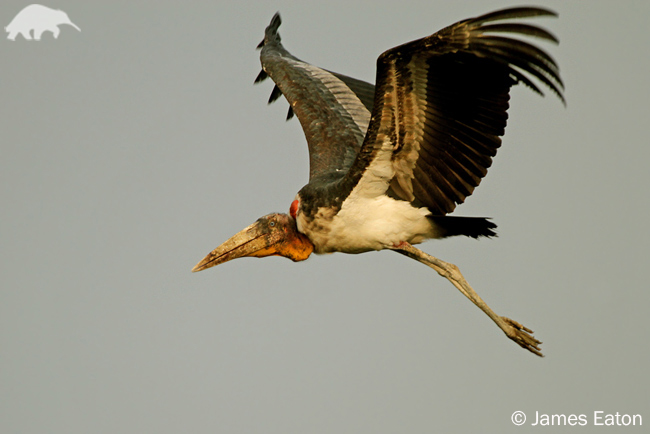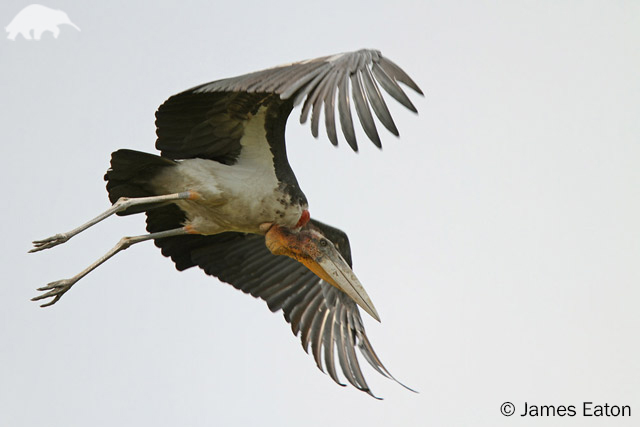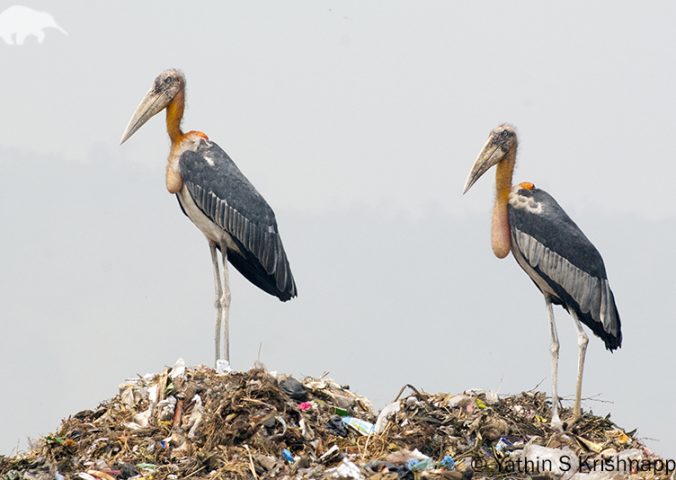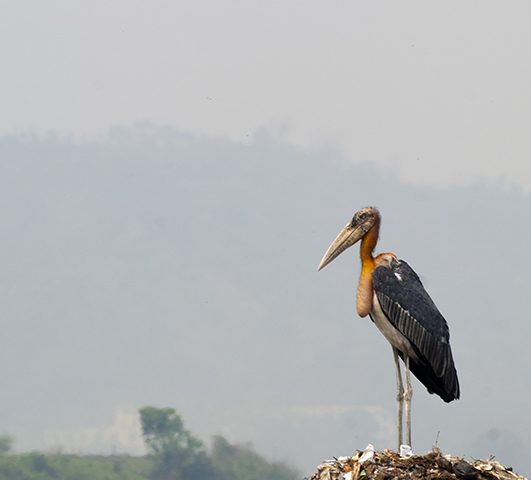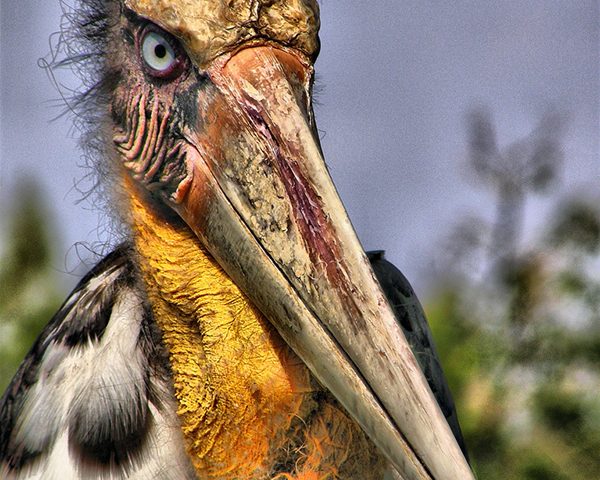About
This tall, incredible bird has an almost prehistoric appearance.
Adults can reach heights of 150cm and have enormous wingspans of about 250cm. Its large size and long, wedge-like bill gives it an unmistakable appearance. The Greater Adjutant has a wide and varied diet. It sweeps through water with its huge bill, scooping up fish, crustaceans, amphibians, insects and reptiles. The species is often seen at rubbish dumps or abattoirs where it will search out decaying food and carrion. Its intimidating size enables it to take food off other scavengers. The greater adjutant belongs to a genus of three currently existing species and approximately nine extinct members. This genus diverged from all other species 19.7 million years ago in the Neogene period. The keys threats to this species are direct exploitation, including the felling of nest trees, drainage, conversion, pollution and over-exploitation of wetlands. The Indian population of this species is threatened by contaminated open rubbish dumps, where pollutants are disposed along with carcasses and foodstuff. This species itself is possibly locally extinct in Laos, Myanmar and Pakistan. There have been conservation awareness programmes in Assam and a project to protect nesting trees and rehabilitate chicks fallen from nests. However, this project has now stopped.
- Order: Ciconiiformes
- Family: Ciconiidae
- Population: 800-1,200
- Trend: decreasing
- Size: 5-150cm
- Weight: U
EDGE Score
Distribution
This species is found in southern Asia in countries such as Bangladesh, Cambodia, Laos, Myanmar, Nepal and Thailand.
Habitat and Ecology
This species favours wetland habitats, including lakes, swamps, pools and rice fields, as long as fish are available. The bird can also be found close to urban areas, feeding at rubbish dumps and abattoirs. This species has a wide and varied diet. The breeding season occurs within the dry season, usually from October to June, when access to fish becomes easier as waterbodies dry up.
